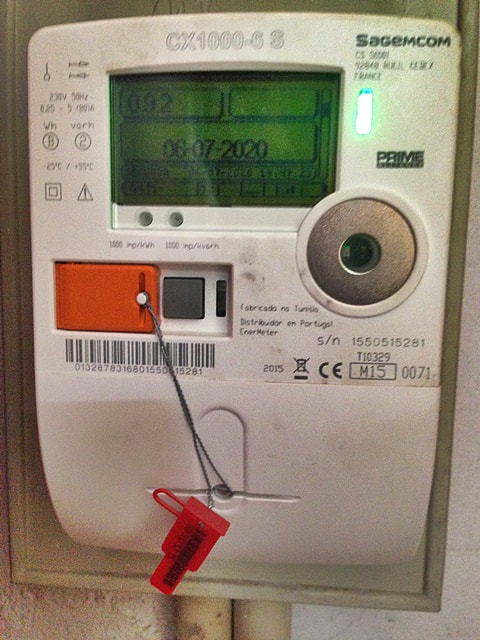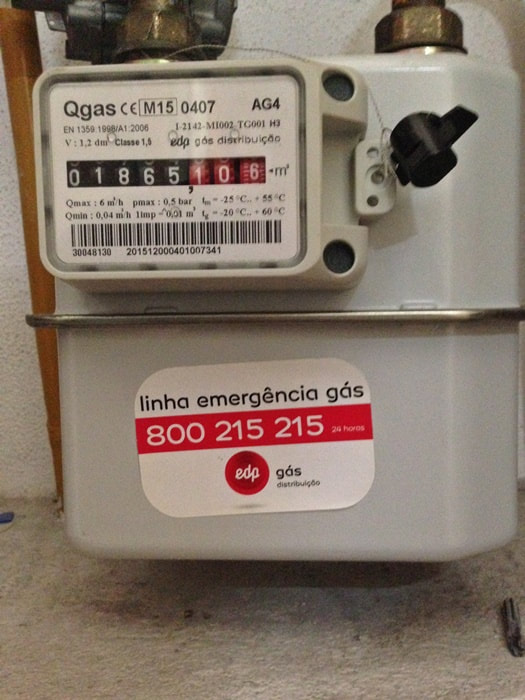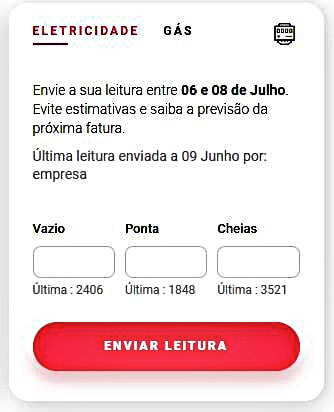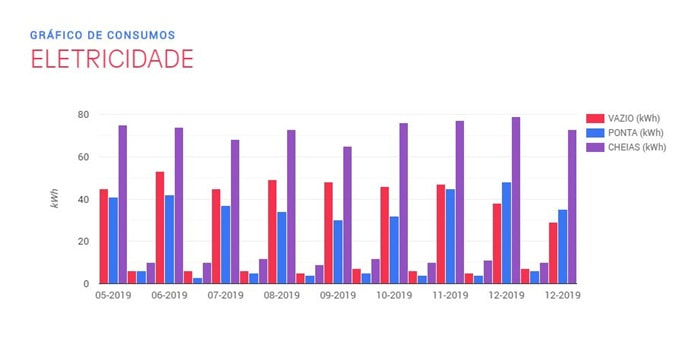|
Past blogs have dealt with how to establish utilities in Portugal. Inevitably, you’ll need to read those meters so this post explains how, and why, it is best you report those readings yourself. When we moved into our first apartment it had been vacant for several months. We discovered a water leak, which we promptly repaired, but we really didn’t know how long it had been leaking. Our initial water bills were extremely low even though we were using a lot of water washing clothes, mopping floors, etc. We thought, “Wow, this will be great if that is all we will owe for water.” Several months in, after the move-in water binge and the water leak, we received a much higher bill. Same thing with the electric and gas bill, which was astounding (well over 350 euros for the month) for an apartment that was about 800 sq. feet. That totally blew our minds. We asked the landlord about this and he gave us a patient smile. Had we been reporting our water, electric and gas readings every month? No. Back in Georgia the automatic smart reader took care of the electric and gas, and there was a guy who did the reading at the street each month. No effort on our part whatsoever. Depending on your utility company, this may not be the case here in Portugal. This one of those things that the Portuguese are automatically aware of because it's part of the culture. Not so the new American folks in town. Lesson learned. Customers here are obligated to provide a monthly water, electric and gas reading or else the appropriate companies will charge an estimate. Every 4-6 months or so they will send someone out to read the meter and adjust the amounts accordingly. If your estimate is based on usage while the apartment is empty, by the time they read the meter you are going to be in for a shock. Like we were. Since that time, we login onto Aquas de Porto’s website every month and record our water usage. There is a date on the water bill when they recommend you read your meter, which will be a couple of weeks before the invoice date. I set an alert on my phone to remind me to take the reading to avoid any surprises in the future. This also highlights any issues that we may have in our water usage and prompt us to do an inspection for leaks if the usage is unusually high. Most of the water companies will have an internet site, or an automated dial-up option, that will allow you to enter your reading. There are usually 3-4 numbers that you need to enter. Sometimes there is another number with a red box around it, but you don’t need that one- it all depends on the equipment installed at your location. If your apartment or house has gas service the process is the same, except the date required to read the meter will be different. On the gas meter (see above) you will record three or four digits and ignore the one behind the decimal point (usually with a red box around it) We have EDP, and they have an app that we use to enter the values. The app also notifies us when to read the meter. Your electric service may be different depending if you have a smart meter or not. Our first apartment had a regular watt-hour meter and we recorded the numbers on the EDP website or app, the same as for the gas usage. If you have a smart meter, reading the meter is less straight forward, but fortunately it is really not such a big deal if you decide not to as the electric company will normally record the readings remotely. Since I have to get the gas reading anyway, I usually read our smart meter and submit the values. This way I can monitor if there are any problems, or if EDP somehow would mess up the reading. It hasn’t happened yet, but I feel better doing it this way. For the smart meter, there are three readings you are going to need; Vasio, Ponta and Cheias. These words translate to something like Empty, Top and Flood, which won’t make too much sense to a non-Portuguese speaker. Vasio is the off-discount rate (weekends, holidays, overnight) which is the cheapest electrical rate. Ponta is peak rate, the hours when electric power is the most expensive. Peak rate varies by time of day, season, outside temperature, etc. Basically, any time when electricity demand is highest you are going to get charged more. Cheias is the off-peak rate. At our apartment, we don’t really see a lot more kWh (kilowatt hours) of off-peak vs peak for different seasons; our usage stays pretty much constant. The company can push a signal into your smart meter based on their total demand to change the rate between off-peak and peak whenever they identify excess demand. This changes the meter to record your usage from off-peak to peak. We get quite a bit of discount rate usage, probably the result of us running our dishwasher overnight since it is equipped with a timer and we can set it to run to take advantage of the discount rate. Our graph is kind of messed up since I read the meter on the 7th of the month, and EDP reads the meter remotely on the 9th, so we have 2 readings per month. This is why we have the 3 bars with the bulk of the usage, and 3 bars of very little usage. I expect I could just skip taking the reading altogether, but it allows me to keep an eye on what is going on.
Hopefully, this demystifies the process for you, and keeps any scary utility bills at bay.
Donna Spaulding
2/9/2021 07:35:53 pm
Your article was right on time. I will be moving to Portugal in March and heard comments that the meter reading was always a problem. You have provided insight that clears up my concerns. Very good article. Comments are closed.
|
Your HostsHarold is a former software engineer. Jana is an author. Together they're exploring their new life in Portugal. Archives
December 2022
Categories
All
|





 RSS Feed
RSS Feed